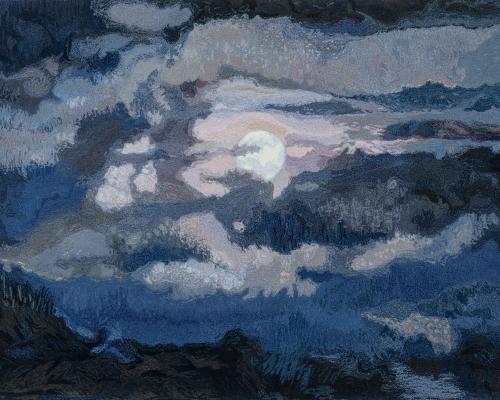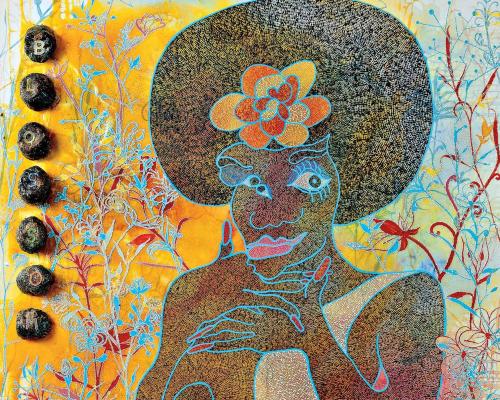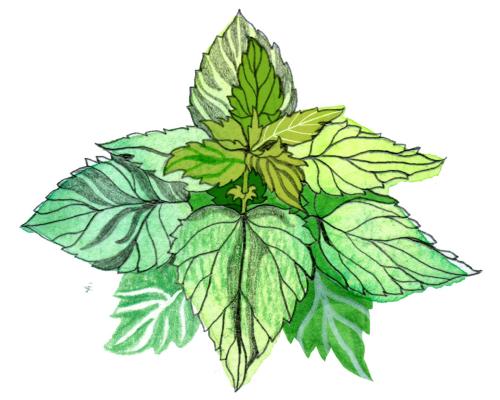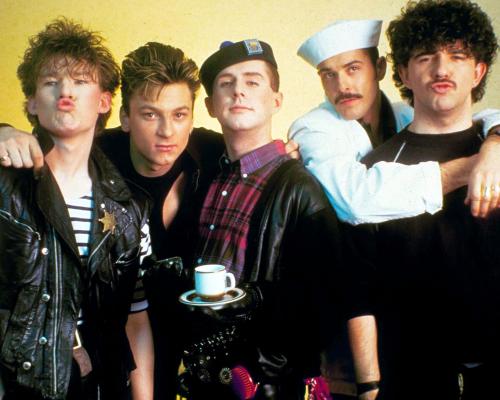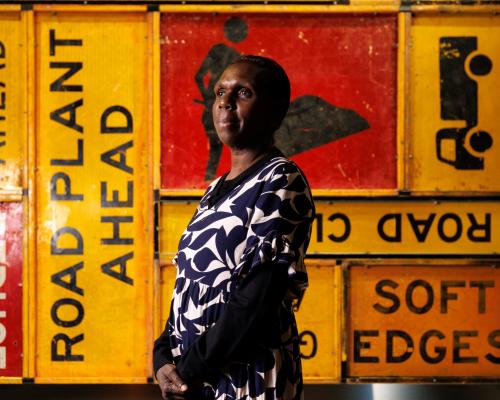
Gaypalani Waṉambi grew up surrounded by art, with her family home in north-eastern Arnhem Land doubling as a studio where her parents and siblings painted on bark and wooden poles. In her late teens, she started assisting her father, esteemed artist Mr W Waṉambi, who taught her how to paint the clan’s ancient designs, using traditional materials such as ochre. As he branched into more experimental forms such as animation and etching on metal, she too began to experiment with these new mediums.
On Friday night, the Yolŋu woman was awarded the $100,000 top prize at the 42nd National Aboriginal and Torres Strait Islander art awards (Natsiaas), one of Australia’s richest and most prestigious art prizes, for an artwork that honoured his legacy while forging her own path.
Waṉambi’s work was among seven winners across categories ranging from bark painting to multimedia, with six of the awards won by women, including senior Pitjantjatjara artist Iluwanti Ken, who won the painting award. Each category winner receives $15,000.
Gaypalani’s winning work, Burwu, blossom, is a shimmering large-scale depiction of one of her clan’s ancient songlines, etched on to the back of discarded metal road signs; a powerful fusion of ancient stories and knowledge with contemporary technologies and materials, and a tribute the cultural inheritance passed down by her father.
-
Sign up for the fun stuff with our rundown of must-reads, pop culture and tips for the weekend, every Saturday morning
Created on a 3 sq metre assemblage of 15 metal road signs, the artwork’s surface depicts hundreds of stringybark blossoms and thousands of bees, referencing the songline of Wuyal, the honey hunter – an important ancestor for the Marrakulu clan. Viewing the etched illustrations from different angles, they seem to shimmer with movement – like the vibrating of tiny wings.
The back of the work is a collage of red and yellow road signs: “DETOUR” reads one; “ROAD CLOSED AHEAD”, another.
In a joint statement, the judging panel – Yamatji curator Stephen Gilchrist, Meriam artist Gail Mabo, and Bundjalung, Muruwari and Kamilaroi artist and researcher Brian Martin – described Burwu, blossom as “an exceptional work that visually and materially explores different relationships to and understandings of Country”, saying: “Each jewel-like panel shimmers with exquisitely rendered designs that are deeply anchored to Yolŋu philosophies.”
In Yolŋu culture, sacred designs are passed down by knowledge holders to the younger generations. For a long time it passed between men, but from the 1970s onwards senior men began to teach their daughters. Gaypalani’s father taught her to paint the miny’tji for the clan’s saltwater stories, and she assisted him in creating the detailed depictions of schools of wawurritjpal (sea-mullets) he was renowned for. He also taught her the designs for the freshwater Wuyal songline.
“I showed these designs to him, to my father – my paintings of the honey,” Gaypalani said in a prerecorded statement in Yolŋu Matha. “That is when he told me ‘Great! You will take this design now as your own. And you will paint this when I am no more.”
Mr Waṉambi died unexpectedly in 2022, aged 59. Writing about the Wuyal songline for the landmark international exhibition Madayin, which he co-curated, Mr Waṉambi wrote: “When we see the flowers blossoming, we sing dhaŋarra, and it reminds us of all the spirits of the people who have gone before us and will bloom again.”
Gaypalani’s etchings on metal are part of the found-art movement that has blossomed in Yirrkala in recent years, spearheaded by artists such as Gunybi Ganambarr. Fuelled by a spirit of innovation, these artists started using discarded road signs and detritus from mining operations as canvases, etching designs on to their surfaces.
Gaypalani is the only Yolŋu woman, so far, to make art in this medium.
A spirit of innovation was present across this year’s finalists, which are now all on show at the Museum and Art Gallery of the Northern Territory (MAGNT) in Garramilla/Darwin.
“I think the Natsiaas provide a platform for people to try something new; to experiment and push their practice a bit further,” says Kate ten Buuren, a Taungurung artist and curator who worked with Keith Munro, the Museum of Contemporary Art’s director of First Nations art and cultures, and Balanggarra artist Karen Mills to select this year’s 71 finalists from more than 200 entries.
The winner of the multimedia category, Jahkarli Felicitas Romanis, a Naarm/Melbourne-based photographer of Pitta Pitta descent, experimented with Google Earth mapping and visualisation tools to create distorted images of Pitta Pitta Country for her winning diptych: Pitta Pitta (Extracted) and Pitta Pitta (Google’s Gaze).
“Mapping has historically been used as a tool of power and control, and it’s a really detached way of connecting to place,” Romanis said. “We never connect with place in that way. It’s always feet on the ground.”
Naomi Hobson, hailing from the tiny riverside community of Coen, Cape York, won this year’s work on paper award for her photo Present and Beyond, which shows a teenage boy relaxing by the river. While it appears carefully staged, Hobson said she took the photo moments after seeing him playing with his younger brothers and a wooden boat, and he chose the pose himself.
It’s a stark contrast to how Hobson’s ancestors were photographed. “There’s old photos of my great-grandfather, and what was done for him to be in that photo wasn’t comfortable, it wasn’t nice,” she said. “And so I wanted to respond to that, and say [to the people I photograph]: this is your image. You own it. You take ownership of it.”
Her Natsiaa win is more than just a personal achievement, she added: “It’s not just me. It’s his win. It’s his celebration as well as his family’s … this is a celebration for all of us, for all the families, the community, for all the young people out there that can look at this image and know that they can achieve their goals and dreams and be proud of themselves.”
-
The Natsiaa exhibition is on at the Museum and Art Gallery of the Northern Territory until 26 January 2026
-
Dee Jefferson covered the Natsiaas as a guest of NT Tourism
The full list of 2025 Natsiaa winners
Telstra Art award: Burwu, blossom by Gaypalani Waṉambi, Yolŋu Matha language, lives in Yirrkala, Northern Territory
General painting award: Walawuru Tjurkpa (Eagle story) by Iluwanti Ken, Pitjantjatjara language, lives in Amata community, South Australia
Bark painting award: Bawáliba & Ngalyod by Lucy Yarawanga, Gurr-Goni language, lives in Maningrida, NT
Work on paper award: Present & Beyond by Naomi Hobson, Southern Kaantju and Umpila languages, lives in Coen, Cape York, Queensland
Wandjuk Marika Memorial 3D award: Ngalkodjek Yawkyawk by Owen Yalandja, Kuninjku language, lives in Maningrida, NT
Multimedia award: Pitta Pitta (Extracted) and Pitta Pitta (Google’s Gaze) by Jahkarli Felicitas Romanis, Pitta Pitta language, lives in Naarm (Melbourne)
Emerging artist award: Mat by Sonia Gurrpulan Guyula, Djambarrpuyngu language, lives in Dhondji Homeland, NT


